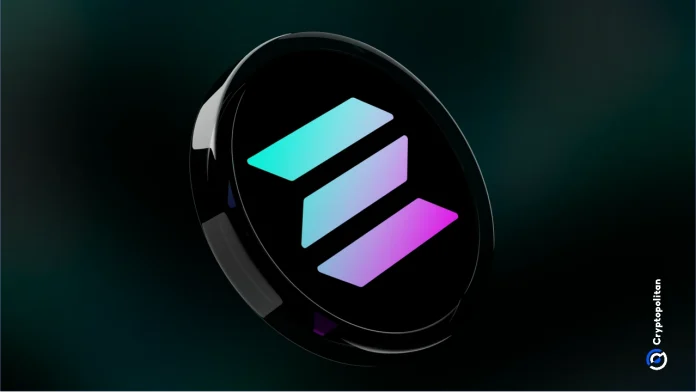Chainlink’s Cross-Chain Interoperability Protocol (CCIP) has launched on Solana mainnet in a move expected to boost the network DeFi ecosystem. In an announcement by Chainlink, it was noted that Solana was the first non-EVM chain to feature its CCIP v1.6 upgrade.
CCIP is an interoperability platform that connects several blockchain networks, enabling users to move assets and execute transactions across multiple chains easily. Thus, Solana coming on board means it is connected to several Ethereum L2s.
With the CCIP supporting more than 57 blockchain networks, adding Solana as the first non-EVM chain also means that projects worth around $19 billion in market cap could expand from Ethereum to Solana.
The announcement explained that these projects, which include Backed Finance, Shiba Inu, and Solv, all have CCIP-enabled tokens because they leveraged the Cross-Chain Token (CCT) standard. However, others such as Maple Finance, Zeus Network, Pepe, and The Graph, also plan to adopt the CCT standard to access Solana.
Speaking about the milestone, Johann Eid, Chainlink Labs Chief Business Officer, stated that Solana already has massive advantages due to its scalability and low fees, which make it ideal for building novel cross-chain applications.
Eid said:
“With CCIP, leading projects representing billions of dollars in market cap can now move assets into the Solana ecosystem, laying the foundation for an asset-rich ecosystem.”
Meanwhile, Chainlink expects the integration to attract institutions to Solana. The announcement noted that institutions already leveraging Chainlink infrastructure could now look to expand their presence on Solana, boosting the network’s real-world assets (RWA) sector.
Interoperability efforts are gaining momentum on Solana
Interestingly, CCIP integration coincides with deploying the Bitcoin liquidity layer Yala on Solana. The protocol announced today that it is launching on Solana and bringing its BTC infrastructure to the network.
Yala is similar to other Bitcoin-focused DeFi protocols that allow Bitcoin holders to use their assets for DeFi activity on smart contract blockchains like Solana and Ethereum. This involves using BTC on Solana protocols and getting DeFi yield.
According to Yala’s announcement, it got a strategic grant and $1 million USDC liquidity from the Solana Foundation. This shows that the push for cross-chain integration between Solana and other networks is key to the Foundation’s mission.
Unsurprisingly, Solana co-founder Anatoly Yakovenko said in a tweet last week that there should be a data availability (DA) solution to solve the problem of blockchain fragmentation. Yakovenko proposed the creation of a metachain that merges data from all blockchain networks into a single ordering.
The need for blockchain interoperability is something that almost every stakeholder in the crypto sector agrees on, even if their approach differs. Ethereum has been improving its capacity as a DA layer for the L2s, and its Fusaka upgrade, which is scheduled for later this year, intends to achieve that.
SOL drops 7% as Solana Conference starts in New York
Despite the positive development of the Solana network, SOL has been down 7% in the last 24 hours, according to data from CoinMarketCap. The sharp decline means its price has fallen to $163, wiping off all its gains in the past week, even as it remains up 17% year to date.
Although the SOL drop is part of the market-wide decline, it captures how the token has performed generally in 2025 as it struggles to reach the heights of 2023 and 2024. So far, SOL is down 15% year to date, likely due to a decline in activity as a result of the memecoin sector seeing less activity.
However, investors will hope for a turnaround as the Solana Conference starts in New York on May 19. The event is generally considered a bullish signal for SOL as several projects and developers on the network tend to announce their upcoming plans there.
Solana software development firm Anza has already proposed a new consensus mechanism for the network called Alpenglow. The proposed changes could make Solana super-fast and eliminate the Proof of History consensus model. It is expected to launch on the Solana testnet in a few months.
Your crypto news deserves attention – KEY Difference Wire puts you on 250+ top sites




